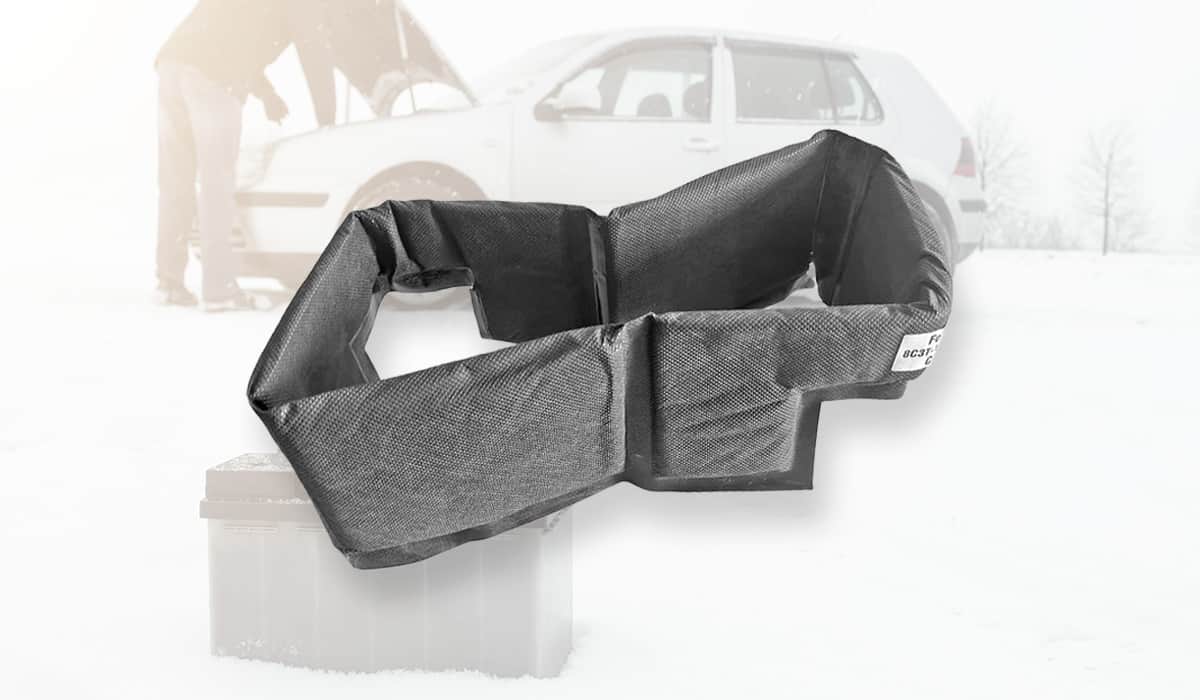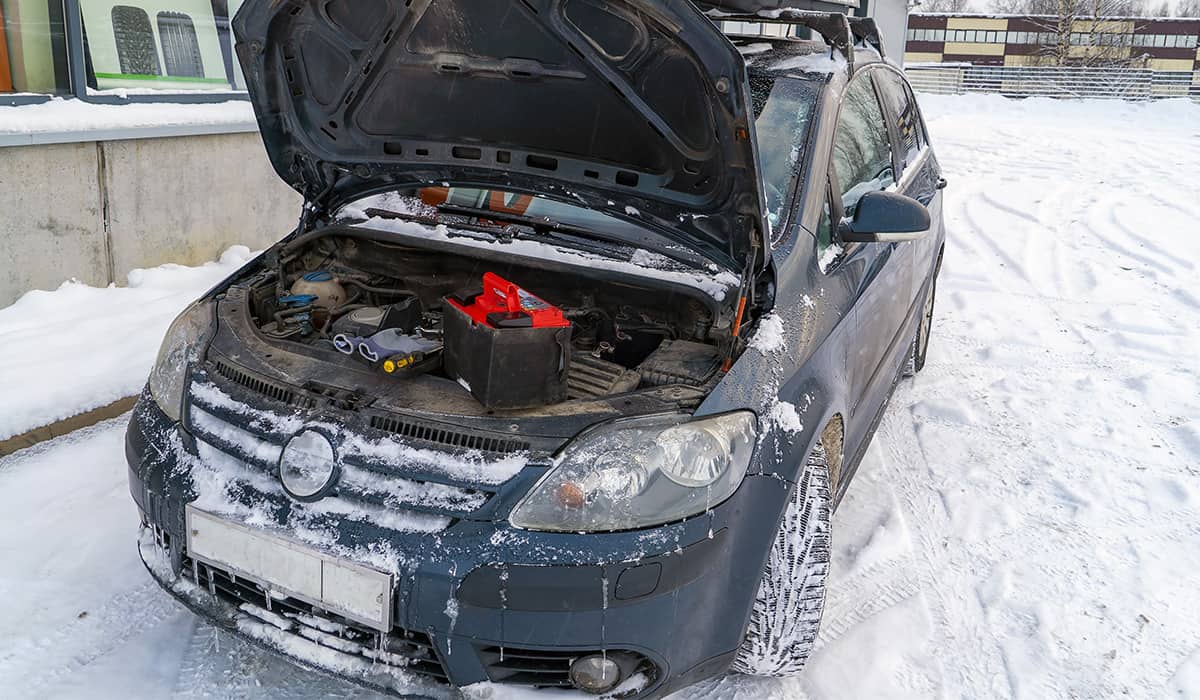Car Battery Blankets: Do They Really Work?
Winter can cause all sorts of automotive issues, from freezing fuel to tire grip issues and failed starts. As it turns out, freezing weather also drains your battery faster, making the voltage drop to a level that can’t support the ignition system. This calls for a nice, warm battery blanket. But do car battery blankets actually work?
A car battery blanket will keep your battery warm to ensure it doesn’t lose its charge in freezing temperatures. The blanket generates its own heat when you plug it into a wall outlet and distributes it around the battery to ensure the battery is ready to start the engine.
If your car battery discharges repeatedly in cold weather, its capacity could be reduced so much that it won’t even power the car’s vital systems the next time you recharge it. And the last thing you want to deal with is sitting in an unmoving vehicle because the ignition is dead. Let’s get started so you can see how car battery blankets work and why you need one in the winter.
What Is a Car Battery Blanket?

A car battery blanket — like this one (on Amazon) — is an insulated wrap that uses electricity to generate heat and provide your car battery with warmth so that it doesn’t run into problems during the cold months. It’s designed to maintain a consistent temperature range, typically 32-50 ℉, which is ideal for cold climates.
If temperatures drop below freezing point, it’s good to pair a battery blanket with an engine block warmer. Installing a battery blanket is relatively simple — you simply wrap it around the battery and secure it with its strap. The blanket comes with a power cord you can plug into a standard outlet.
Do Car Battery Blankets Actually Work?
Car battery blankets work, and they’re a worthy investment. They keep your battery warm to ensure it doesn’t self-discharge due to low temperatures. Think of it like a thermal insulator, preventing your battery from losing heat to the cold surroundings.
If at any time you notice your car takes longer to start or won’t start at all in the early morning during winter, you’re likely dealing with a drained battery. While all batteries naturally lose their charge with time, the lead-acid and nickel-metal hydride batteries we use in our cars don’t hold their charge well in freezing weather.
So, if you park your car in the evening without wrapping the battery in a good blanket, the next morning you might not be able to start your car.
Depending on where you live, it’s good to prep your battery before the winter starts. And if you’ve got a new battery, winterizing it is a tried-and-true maintenance procedure that will extend its service life.
There are basically two types of these blankets: regular ones without heating capabilities and those that can heat up when plugged in. It’s advisable you use the latter because battery blankets that don’t require electricity to heat up aren’t reliable in extremely cold weather.
What Happens to Car Batteries in Cold Weather?
Cold weather leads to slow chemical reactions and power loss in car batteries, like the conventional lead-acid batteries used in most cars. Freezing weather can drain your battery power by 30-60%.
Your car battery generates power through an electrochemical process, which can be affected by extreme temperatures. When the weather is cold, this process slows down, and your battery can lose 35% of its strength at 32 ℉.
At 0 ℉, the battery can lose a whopping 60% of its strength, making it hard to start the engine. The brightness of your headlights may also be reduced. In extreme cases, the battery casing and internal components experience enough stress that the case itself cracks.
To avoid these issues, it’s important you take precautionary measures to protect your battery in the winter and boost its longevity. Your best bet is to invest in a good battery blanket.

How Much Does a Battery Blanket Cost?
The price of a battery blanket depends on the product’s features, but you can get them for below $100. If you’re looking for non-electric blankets that use special insulation materials alone to keep the battery warm, expect to pay between $20 and $50.
Battery blankets that actually heat up to warm the battery cost between $50 and $100. But depending on the brand, some of these products can be as expensive as $150.
Does a Battery Blanket Need to Be Plugged In?
A battery blanket needs to be plugged into a power outlet for it to work because it needs electricity to warm your battery. While some models are designed to be hardwired, most battery blankets can be plugged into a standard outlet.
You can plug in the battery blanket any time you’re parked, and you should do so regularly when temperatures are bound to drop very low. Most people worry about leaving battery blankets plugged in overnight, but it’s safe to do so, and experts recommend it.
The battery will stay warm to prevent the electrolyte from freezing, which could diminish the battery’s capacity. This way, you won’t have to deal with rough or failed starts in the morning.
But you can’t just plug in the battery blanket and expect it to work perfectly. First of all, you need to pick the right size for your battery, or you’ll end up with a battery that isn’t fully covered, or a blanket that’s way too big. If that happens, the heat generated won’t dissipate efficiently, which could damage your battery.
Follow these steps to use your battery blanket safely:
- Disconnect the terminal clamps, starting with the one on the negative post.
- Unbolt the nuts that hold the battery in its compartment and carefully lift it out.
- Take the battery indoors where it’s warmer and place it on a dry, flat surface. If it’s dirty, this is the best time to clean away grime and remove corrosion.
- Once the battery blanket is warm and dry, wrap the blanket around it, being careful not to overlap it.
- Secure the battery blanket with the strap provided. Don’t strap the power cord as this will stress it.
At this point, you can simply plug in the battery banket and reinstall the battery in the morning.
Alternatively, you can reinstall the battery in its compartment with the blanket strapped on and plug it into an outlet in your garage or parking space.
While fixing back the terminal clamps, start with the positive one first, then finish with the one going to the negative post. Ensure the power cables don’t touch any metallic part under the hood.
You can draw out the battery blanket power cord through your car’s grill or some other convenient location under the hood and plug it in any time you need.
